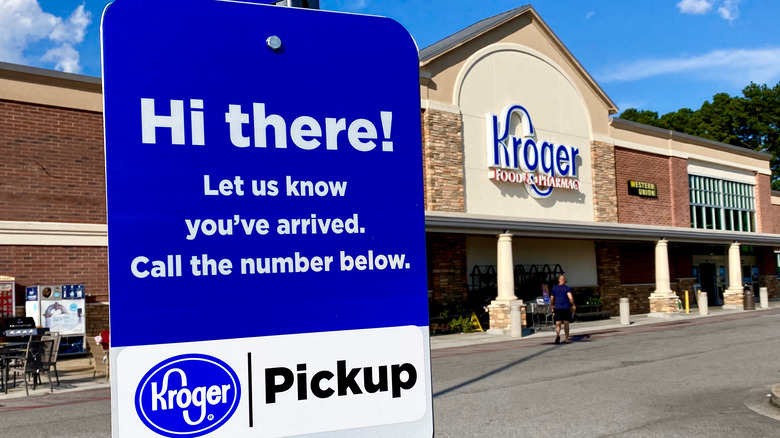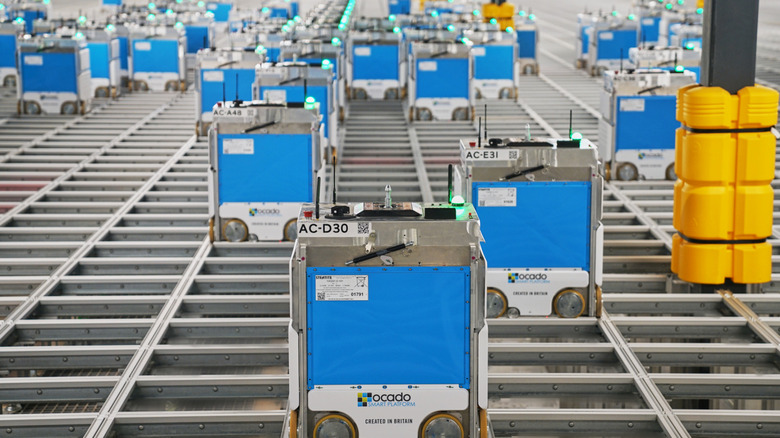The Futuristic Way You Could Soon Be Getting Your Groceries From Kroger
While it may have once seemed unfathomable to not pick out your own produce and browse the aisles of your local grocery store in search of all the ingredients you'd need for the week, many consumers have gotten more comfortable with ordering groceries online. In fact, it's estimated that online grocery will account for about 21.5% of grocery sales by 2025 (via Supermarket News). More and more companies are coming up with innovative solutions that go beyond the standard "click and collect" services, where you place your order online and pick it up at a designated spot. But grocery chain Kroger, is taking things to a whole new level of technology and convenience.
The chain gave the "Today Show" an inside look at a new addition to their services, robotic fulfillment warehouses that they cheekily refer to as "The Hive" (via Twitter). They're building these types of robotic fulfillment warehouses across the U.S., and the first of its kind was opened in March 2021, a 335,000 square foot facility that cost a staggering $55 million to equip (via WCPO). There are 20 of these robotic fulfillment warehouses planned, allowing shoppers from across the nation to test out this futuristic new way of procuring their weekly essentials. Talk about making meal planning easier.
How the system works and how humans are still involved
While there are ways to automate certain parts of the grocery shopping experience, many shoppers may be curious to see exactly how robots can pack a full order. Kroger took the "Today Show" through the whole process in a short video clip, giving shoppers a sneak peek at what the warehouses are like (via Twitter). Basically, the warehouse is equipped with a grid system that contains levels of small plastic bins filled with different items that can be ordered, everything from bread to diapers. There are 800 robots "employed" in the warehouse, and they travel that grid, snatching up the needed items in a given order. They are able to fulfill a complete order within about five to 10 minutes, a pace much quicker than a human employee pushing a cart around a regular grocery store and selecting items from an online order.
In fact, within a full day, the robot fulfillment squad can pack up 20,000 online orders and then, the humans come in. Each warehouse also has about 400 human employees, who take the bins filled with robot-picked items and pack them all appropriately, taking things like temperature into consideration. Then, the order boxes are loaded into trucks, and delivered anywhere within a 90 mile radius for a mere $10 delivery fee. This high-efficiency system is expected to process the same amount as 20 brick-and-mortar stores would annually (via Tech Crunch).

